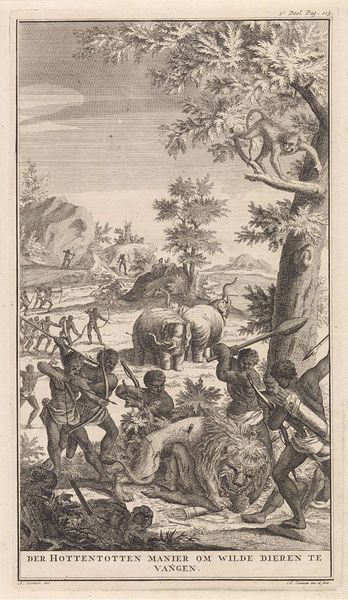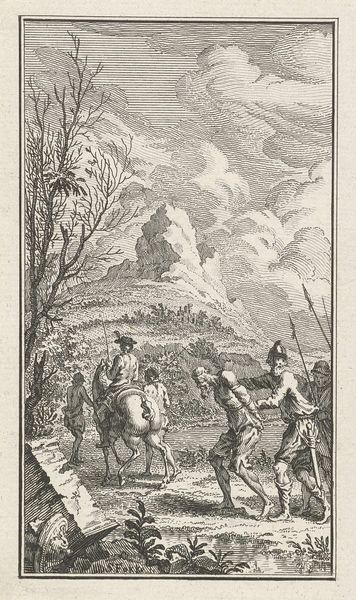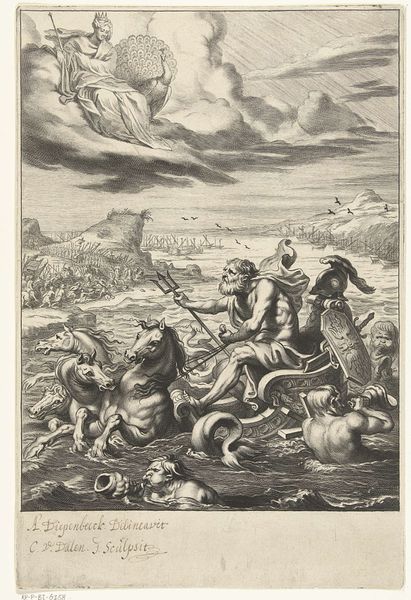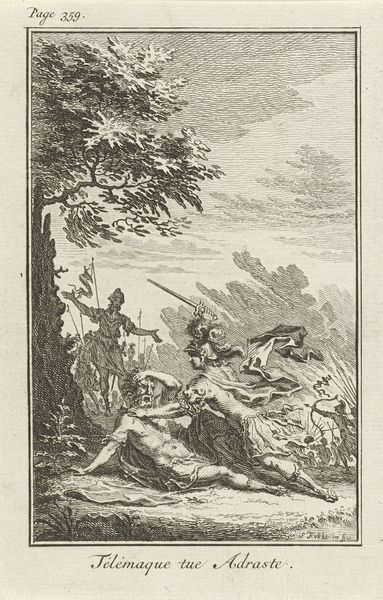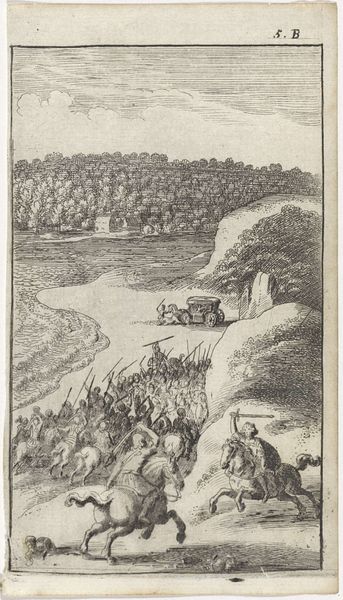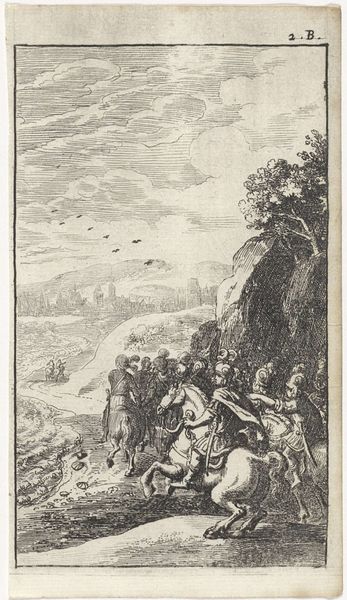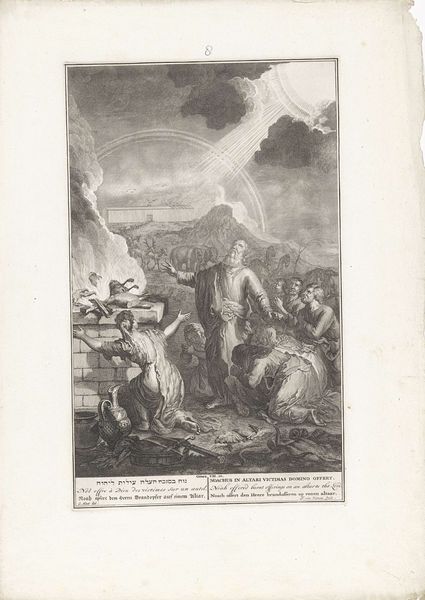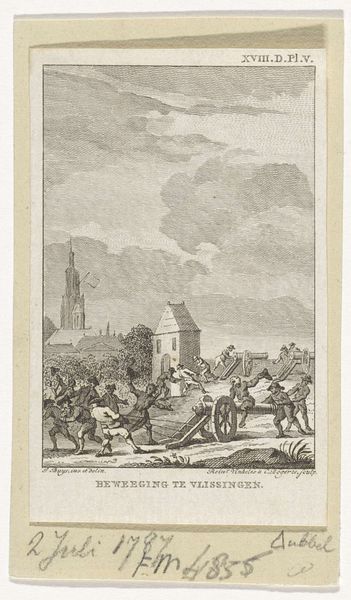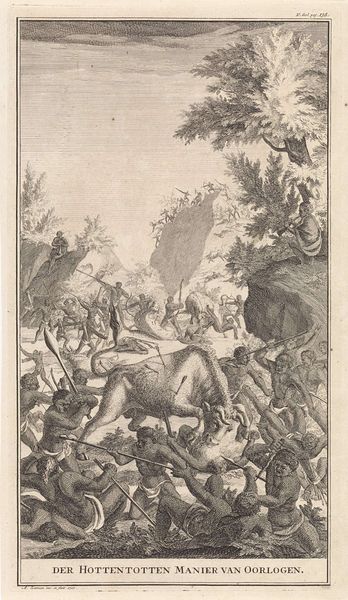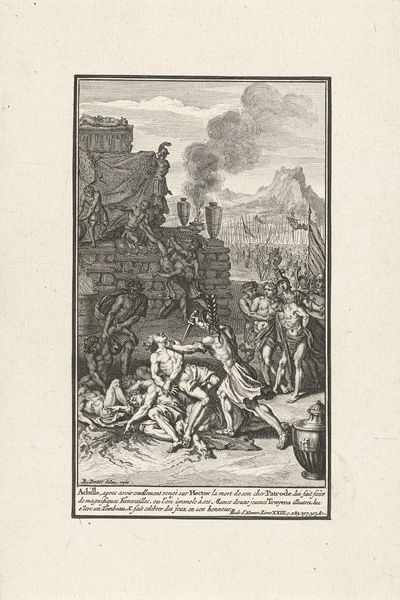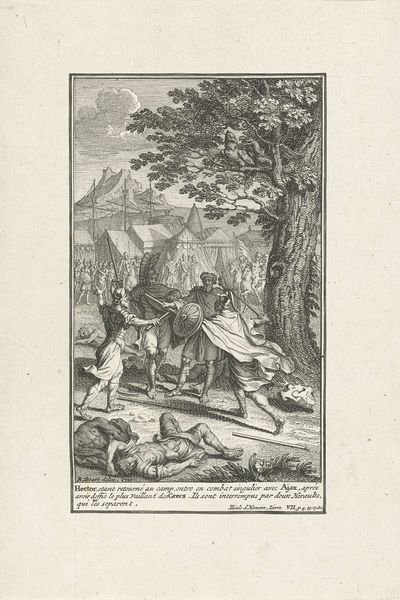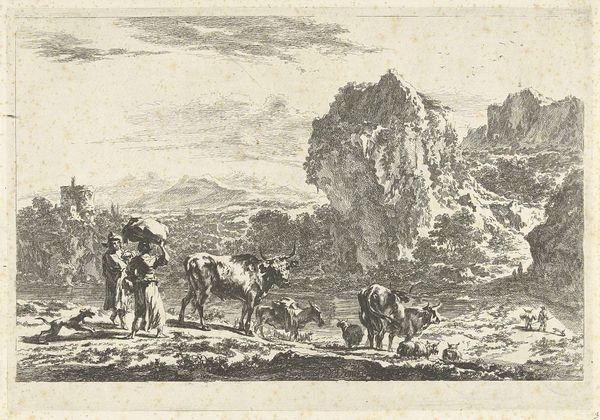
drawing, print, etching, ink
#
pen and ink
#
drawing
#
ink drawing
#
narrative-art
#
baroque
#
pen drawing
# print
#
pen illustration
#
pen sketch
#
etching
#
old engraving style
#
figuration
#
ink
#
ink drawing experimentation
#
pen-ink sketch
#
line
#
pen work
#
sketchbook drawing
#
history-painting
Dimensions: height 130 mm, width 75 mm
Copyright: Rijks Museum: Open Domain
Curator: Abraham Dircksz. Santvoort created this print titled "Slagveld," or "Battlefield" in 1666. It's an etching, now held at the Rijksmuseum. Editor: It’s a scene filled with such… violence. Look at the bodies strewn across the field! The dark, heavy ink emphasizes the brutal finality of it all. A stark depiction, devoid of any romanticism about war. Curator: The symbolism here is compelling, even with the carnage. See the monolithic rock looming in the background? In Dutch Golden Age art, rocks can represent steadfastness, even divine presence amidst chaos. The towering clouds echo this in their vastness. Editor: But is it truly steadfastness or stubbornness? That single rock amid so much death almost feels like indifference. What societal narratives was Santvoort grappling with here? War always exposes vulnerabilities and inequities. The positioning of what appears to be noble figure amid the death, with their fancy carriage, suggests themes of class and power at play. Curator: Intriguing point. Considering the timeframe, still within the Eighty Years’ War context, it resonates with ongoing battles between religious and political forces, where each side likely viewed their cause as divinely sanctioned, thus embodying steadfastness in their struggle. Even today we have cultures imposing what they deem divine and/or justified… Editor: And the bodies on the ground become… symbols of disposable resources for those struggles. What I am drawn to, despite the seemingly chaotic scene, is how masterfully Santvoort employs line work to give the composition depth, making us aware of how conflicts and political landscapes affect the individual body, our bodies. I wonder how this image was received in its time. Curator: This work does challenge notions of heroic battle narratives prevalent at the time. The composition denies us easy glorification. Rather, it focuses on a stark scene of a singular battle aftermath that invites contemplation and deeper exploration on social implications in the context of endless struggle. Editor: Exactly. Santvoort used a traditional medium and familiar iconographic elements to offer what I see is as an unsettling view of war and its repercussions, even inviting present considerations about it. A silent scream from history… Curator: Precisely, where memory continues to evoke not only images, but feelings around our current shared experience.
Comments
No comments
Be the first to comment and join the conversation on the ultimate creative platform.
